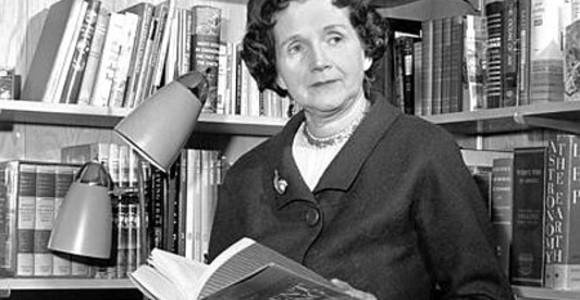
What does sustainability mean to you?
Environmental protection and equal opportunities for women and minorities
Environmental protection and equal opportunities for women and minorities
Sustainability has many faces. The UN has broken the sustainable agenda down to 17 SDGs which contributes to dividing the task of the sustainable development into manageable parts. Which is good, because we all know that it is easier to eat an elephant one bite at a time.
Although sustainability consists of many individual parts, sustainability is also one thing with one overall purpose. The purpose of sustainability is to leave the world in a way where the next generations are not worse off than us, whether the topics are climate, economy, education, inequality etc. It is a question of leaving the earth, nature and society in a self-sustaining way. Hence the word sustainability.
Ecotoxicology and environmentally hazardous chemicals
I think there is an infinite number of meanings of the word sustainability depending on whom you ask. Sustainability covers a wide field but to me like many others certain areas are of particular importance. My main issues are environmental protection and equal opportunities for women and minorities. Along the way in my journey with sustainability, I have discovered that these two issues go hand in hand. This may be a surprise to some – so let me explain.
Writer
Emma Emilie Kanstrup Skou Andersen
”It makes me sad to think about how much we could have achieves, if only women had been able to research on equal terms as men
I grew up by the sea, always with nature within reach. During my entire childhood I fell asleep to the sound of the waves lashing the shore. Therefore, I appreciate nature and that was one of the reasons why I decided to study biology in Odense in 2017. It did not take long, actually only three semesters, before I knew exactly which biology line, I should proceed with: Ecotoxicology and the study of how environmentally hazardous chemicals affect nature.
I discovered at the very first lecture on ecotoxicology how important the work with sustainable solutions is in order to take care of our nature and ourselves. I learned that people have harmed the environment for many years by discharging dangerous chemicals directly into nature. The lecturer, Jane Ebsen Morthorst (by the way an excellent lecturer and researcher) introduced us to one our times most ground-breaking ecotoxicologists, Rachel Carson. This is where equal opportunities between the genders enter the story.
Ground-breaking Rachel Carson and Silent Spring
Rachel Carson, born in the USA in 1907, was an American biologist and writer. Carson grew up in the country at a time when not only the American agriculture but also the American garden owners to an increasing extent used biocides to defeat unwanted weeds and destructive insects.

Rachel Carson was one of the first to shout about the heavy consumption of such chemicals causing a potential damage to animals, nature and human beings. In her book Silent Spring from 1962 Carson described, how the chemical DDT, used to kill insects, moved up in the food chain resulting in the death of many other animals. Carson described how American garden owners noticed an increasing silence in the spring because they no longer were visited by songbirds. This was simply due to the fact that the birds succumbed to the increasing DDT consumption. The silence of spring forms basis for the title of the book, Silent Spring.
Rachel Carson questioned modern science; should we really try to control nature in that way? She criticized the way biocide research was conducted in the 1960s and even suggested less harmful alternatives – but she was met with contempt, resistance and anger from men, who either produced, researched in or legislated on biocides.
Women in the boys’ club of research
In the 1960s, scientific research was mostly reserved to men, and there was rarely room for women. This tendency has influenced the history of research for a long time. Numerous women have experienced discrimination within science – e.g. researchers like Mary Jacobi, who in the late 1800s broke with the attitude that women could not research because their period drained them of energy and brain capacity, and Sally ride, the first female astronaut in space, whom the press despite her PhD in astrophysics confronted with questions about how her gender would affect her space journey. There is no doubt that it throughout history has been harder than necessary for many female researchers inclusive of Rachel Carson to be taken seriously.
Silent Spring is an amazing book that everybody should read. After the book was published, the interest of taking better care of the environment and nature experienced a drastic increase. President Nixon founded The US Environmental Protection Agency 6 years after Rachel Carson’s death in 1964. The Agency has implemented many initiatives that contribute to our taking better care of nature today. I almost dare say that if Rachel Carson had not procured the biocide problems in the 1960s, the legislation on environmental protection in the USA (and much of the world) would look completely different than it does today.
”Only 34 % of the present researchers are women. In 2018, 23 % of the professors employed at Danish universities were women
It was not easy for Rachel Carson to be accepted in the research establishment in the 1960s. Unfortunately, there are many stories like hers about female researchers, whose ideas were suppressed because the research establishment did not welcome women. I makes me sad to think about how much we could have achieved, if only women had been able to research on equal terms as men. If only research was allowed to use the entire talent pool and not only the male.
But that was then – what about now?
We have come a long way today – but we have still not crossed the finish line. Although approx. half of the graduating candidates from the Danish universities are women, the percentage of women is decreasing the further on we look at a typical career path. Only 34 % of the present researchers are women. In 2018, 23 % of the professors employed at Danish universities were women. At the same time, men receive more research grants than women, both in terms of number of grants and total amount.
It is not only between the genders that equality within scientific research does not exist yet. We can still improve our inclusion of students and researchers with sexualities, nationalities, religions, ethnicities and cultural backgrounds that deviate from the norm – and people with physical or mental disabilities. We can and must improve within this area. Because talent exists everywhere, and we can only utilize it if we search everywhere.
”We have to exercise sustainability and humanity in our recruitment processes
What is sustainability to you?